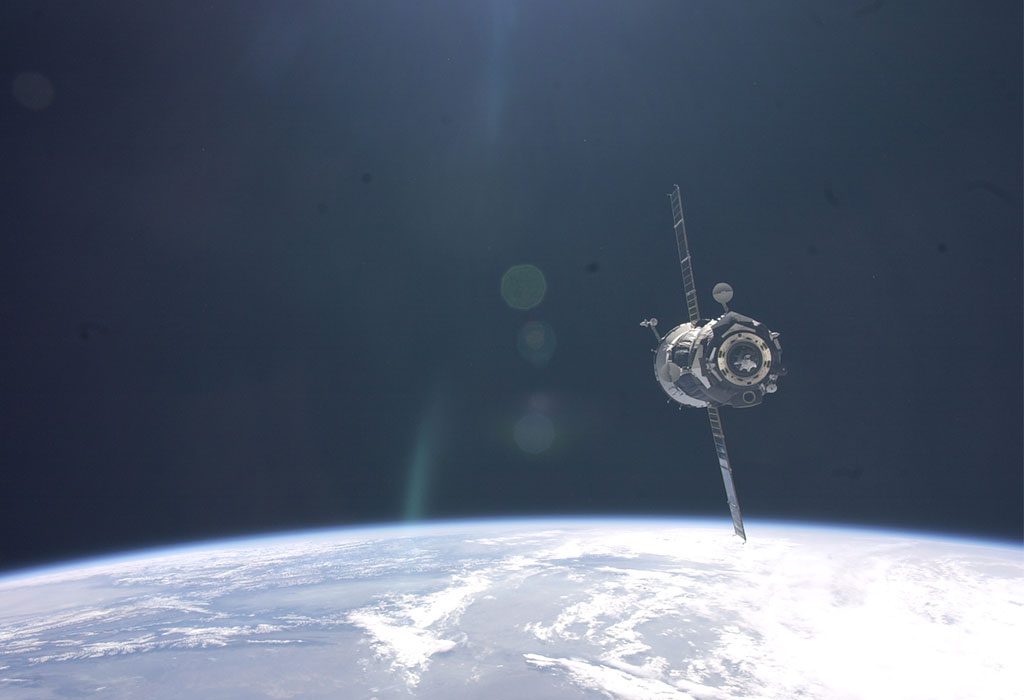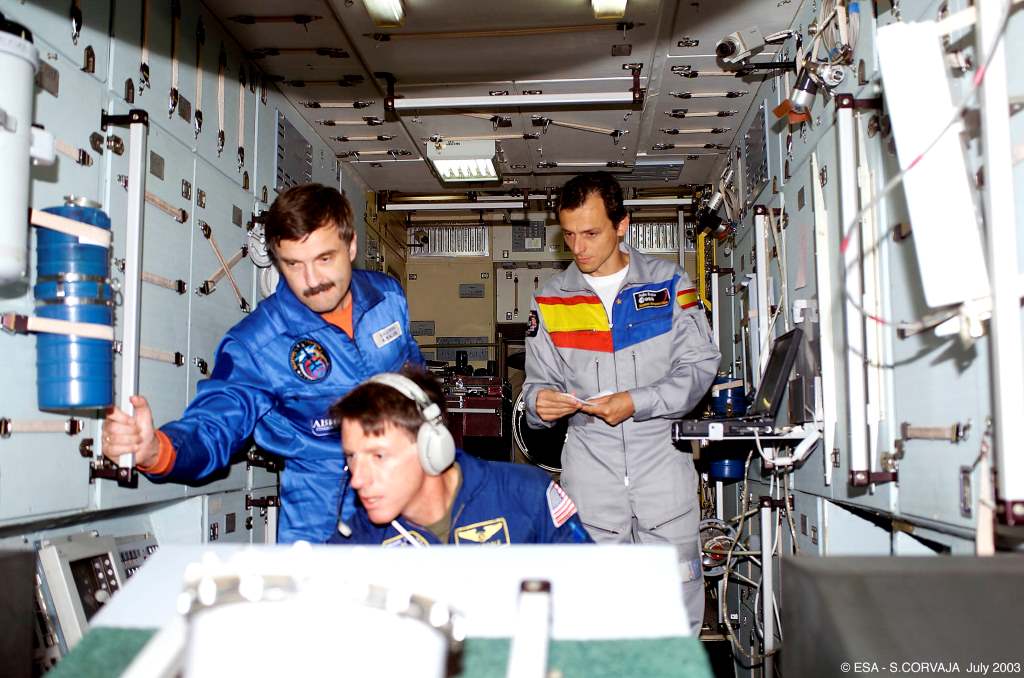
IESE Insight
Reaching for the stars: astronaut Pedro Duque on how diverse teams lead to out-of-this-world innovation
Astronaut Pedro Duque, the first Spaniard to go up into space, shares the keys to launching out and going where no one has gone before.
It was July 1969 when Neil Armstrong took his “one giant leap for mankind,” becoming the first person to walk on the moon. Watching the black-and-white images on his television at home was six-year-old Pedro Duque. He was mesmerized. And like many other children of his generation, he thought he might like to be an astronaut when he grew up. Only, in his case, he actually did.
Duque had the good fortune of growing up in a supportive family environment. His mother, a teacher, instilled in him the importance of reading and studying, while his father, an air traffic controller, often invited pilots and engineers over to the home.
When he was old enough, Duque enrolled in the Higher Technical School of Aeronautical Engineers (Escuela Técnica Superior de Ingenieros Aeronáuticos or ETSIA) in Madrid, graduating with top marks.
Soon after, he was invited to join the European Space Operations Center (ESOC) in Darmstadt, Germany. When, in 1992, he saw a job ad with the European Space Agency (ESA) open to anyone interested in pursuing a career as an astronaut, he took it as a sign.
The selection process was grueling. Back then, recruitment was done along national lines. Each country would make an initial selection, and then those candidates would be sent to compete with finalists from other countries. Only the best got through.
Duque was up against more than 6,000 equally strong candidates, all robust and adaptable, with exceptional operational capabilities, in top physical and psychological shape. When it comes to its employees, the world of astronautics doesn’t take chances.
In 1998, Duque donned his suit in readiness for his inaugural trip into space — and the first for any Spaniard. It was the STS-95 mission aboard the NASA space shuttle Discovery, in collaboration with ESA and NASDA (the equivalent Japanese space agency).
Duque remembers an exhilarating countdown, then the shuttle lifted off from Kennedy Space Center, Florida, and within 10 minutes had reached a speed of 28,000 kilometers per hour.
Over the course of the next week, Duque and his six fellow crew members — including John Glenn, on his second and final space flight at the age of 77 — carried out science experiments that furthered our understanding of the sun and the effects of weightlessness on the human body.
Improvisation means leaving nothing to chance
The success of a space mission significantly depends on a detailed forecast of risk. All of the many people involved in designing the mission put their energies into anticipating problems. They predict all manner of setbacks, from minor inconveniences to full-blown disasters, and prepare solutions.
To avoid unpleasant surprises during a week in space, the astronauts spend years getting ready. By doing so much training, tasks can be performed with greater ease, even in unpredictable circumstances. As Mark Twain once quipped: “It usually takes me more than three weeks to prepare a good impromptu speech.”
Astronauts train inside a simulated workspace that replicates the conditions of the spaceship, right down to the last button. They practice routines and emergency drills in readiness for any situation.
But safety precautions are just one aspect. Such simulations also help team members get used to spending time together — sharing meals, chatting, getting to know each other — so they already feel comfortable living with each other in close quarters before they even go into space.
Each person has a separate, clearly defined role, but success ultimately depends on everyone working well together as a team. Even though one crew member is designated as the commander, if an emergency arises, everyone is expected to collaborate and muck in.
When you’re more than 500 kilometers away from Earth, a tiny mistake can turn into a major catastrophe. While it’s important to be aware of this fact, it mustn’t get in the way of performance.
Legend has it that veteran pilots used to prefer hand-wound watches to battery-powered ones, not only because they were considered more reliable, but because the habit of winding the watch forced them to pause, take a deep breath and be more methodical under pressure. Astronauts adhere to a similar principle of mindfulness.
The benefits of diversity
ESA facilities are spread out across Europe. Working with them implies working in an international environment, surrounded by experts from 22 countries, representing fields as diverse as their backgrounds.
This diversity is beneficial, Duque believes, because “diverse teams lead to greater efficiency.”
Experience shows this to be true. Two people bringing their respective experiences together will end up having a collective expertise richer than either of them would have on their own. For example, problems with a prototype are detected far quicker when examined by a wide array of contrasting viewpoints.
Another, less quantifiable benefit of diversity is its symbolic value: international collaboration confers a greater sense of positivity on any mission.
This was recognized in 1999 when Spain’s Prince of Asturias Award for International Cooperation went to Duque along with America’s John Glenn, Japan’s Chiaki Mukai (fellow crew members from his STS-95 mission) and Russia’s Valery Polyakov (who at that time held the record for the longest continuous stay in space). The award lauded their ability to overcome national barriers in the pursuit of shared goals that would benefit humanity.
Over the past three decades, Duque has seen changes in his field, including more women in astronautics. When he started at ESA, there were hardly any female engineers, and space exploration was seen as a strictly male pursuit. But the year 2000 saw more female graduates entering the industry, and Duque believes it’s only a matter of time before gender parity crosses the final frontier.
Healthy competition
At last count, 70 countries invested in space programs, up from 47 just a decade ago. Euroconsult Research predicts that figure will surpass 80 countries in a few years’ time.
The biggest investors in space exploration programs are the United States, followed by China and Russia, then Japan, the European Union and member states such as France, Germany, Italy and the United Kingdom. India recently announced it was ramping up its space budget.
It’s no longer a case of there being two main players — the United States and the Soviet Union — both trying to one-up each other. Their space race, set against the backdrop of the Cold War, ran parallel to their nuclear arms race. They may have been driven by a negative doctrine of mutually assured destruction (MAD), but out of this period, both countries certainly saw positive innovation and technological development.
Duque’s generation may look back on those times with bemusement, but he concedes one truth that the space race taught us: competition can lead to progress.
Whether in astronautics, sports or business, this drive to beat your opponent is part of human nature. “Competition, if well-handled, can be positive,” he says. “It can help everyone to raise their game.”
However, competition should be set within a healthy, realistic framework, and be within the professional possibilities of each person. This can be the difference between small steps (incremental change) and giant leaps for mankind (transformation).
The importance of versatility
Between 2006 and 2011, Duque took a leave from ESA to work for Deimos Imaging, first as managing director and then as executive president. Deimos is a Spanish company that uses satellites to render exact images, in near-real time, of zones affected by natural disasters such as fires, droughts or floods, in order to make damage assessments faster, easier and more efficient.
Duque brought his unique expertise as well as picked up a new set of management skills. Having been used to one style of leadership as an astronaut, which was about working in close alignment with a team, he soon learned “that wasn’t the only way to lead; sometimes groups require a completely different approach.”
As a leader going from one organizational context to another, you have to learn how to read the new environment quickly and adapt your style accordingly.
Step back and see the big picture
A lot of astronauts who have seen the Earth from outer space have commented about the humbling nature of this experience. Viewed from afar, the Earth seems fragile, a small blue marble suspended in an infinite void. You see everything as a whole — not as separate parts, divided by national borders — and conflicts suddenly fade away.
This shift of perspective has been labeled “the overview effect,” and its impact on observers has been profound. Duque concurs with these accounts. “Seeing how small the Earth is, and how thin the atmosphere is, gives a much clearer understanding of the need to protect the environment.”
Seeing things from a distance can give you new perspectives on life — from international relations to the ecological and human concerns about what we do both on and to the planet.
More than 70 years have passed since the Earth was first photographed from space. These days, such images form part of our collective imagination. Until 1946, humanity could only wonder what the world looked like.
Now, space travel has made it possible to have a precise view not only of our own little planet but of many planets and other phenomena in our solar system. And the more we understand and appreciate the world we live in, the better perspective we will have on how to preserve it.

Living the “impossible dream” again: In 2003, Pedro Duque went back into space for the second time, on a mission with the Russian Soyuz TMA-3. Russia’s Alexander Kaleri (left) was the commander, and the British-American Michael Foale (middle) served as a flight engineer along with Pedro Duque (right). Duque carried out various scientific experiments on the International Space Station, in what was called the Cervantes Mission, named after the Spanish author of Don Quixote. They reportedly brought a CD version of the book with them, which the crew members signed. It seems like the Man of La Mancha reached the unreachable stars after all.
Bringing it back down to earth
Some people wonder why on earth governments are spending so much money on space exploration when that money could be spent making life better here on Earth. Yet, many day-to-day conveniences that we take for granted have their roots in astronautics, without us even realizing it.
- Smoke detectors: Though commonly found in our homes and workplaces, such devices were first used in industrial settings, including space stations, to detect toxic leaks.
- Camera phones: The next time you take a picture on your phone, consider that the technology exists largely thanks to a NASA inventor’s quest for smaller, better imaging sensors and compression systems to transmit image data, using less power.
- Cordless, handheld tools: That DustBuster or power drill in your garage are direct descendants of lightweight, portable devices developed to do everything from collect lunar soil samples to carry out quick repairs in confined spaces, with limited mobility, in a space suit.
- Water purification systems: The need to filter and reuse water in the remote environment of space has led to innovations in water treatment in other extreme contexts, such as refugee camps or disaster zones.
- Solar panels: Solar cells were used as an energy source for propelling spacecraft and satellites as long ago as the 1950s.
- Global positioning systems: Today’s GPS may owe more to the military than astronautics, but its widespread use came as a result of the Cold War space race.
This article was originally published in IESE Insight magazine (Issue 36, Q1 2018).
